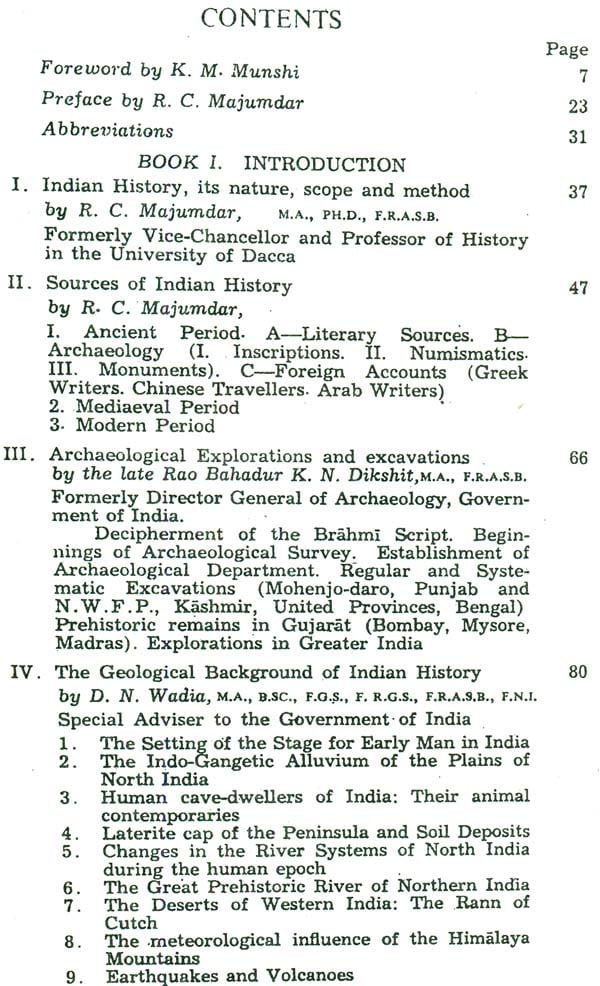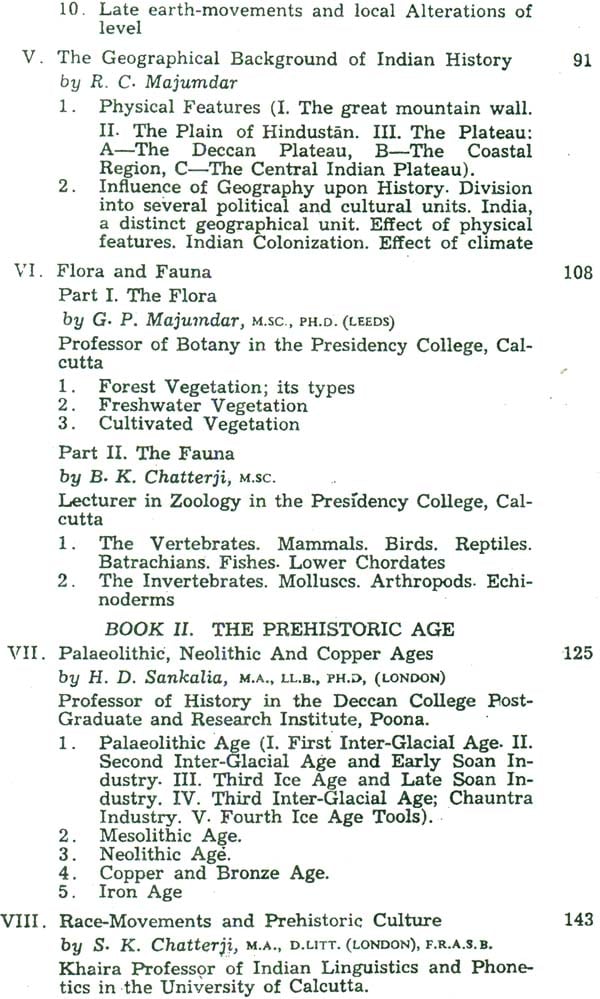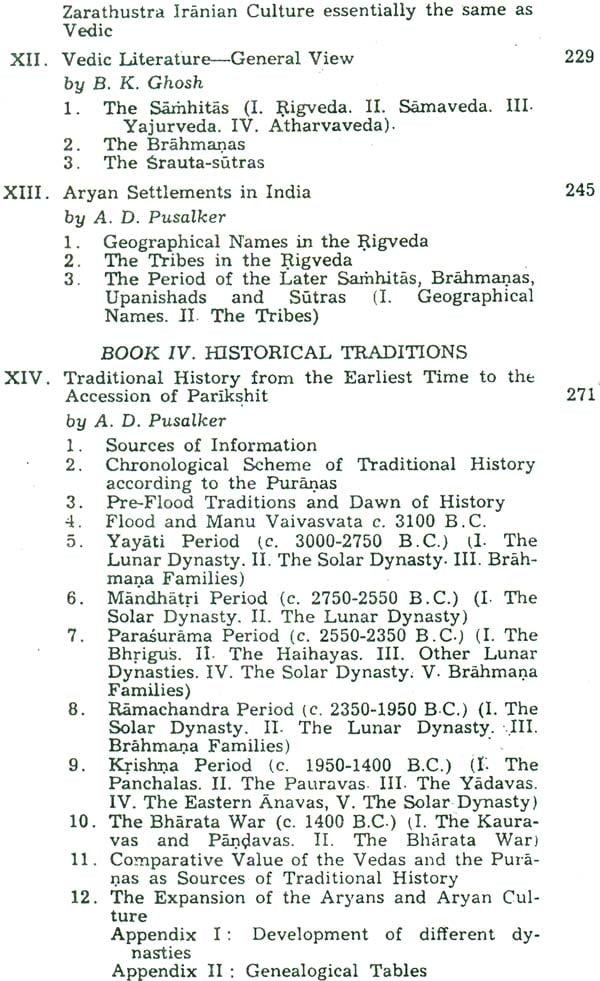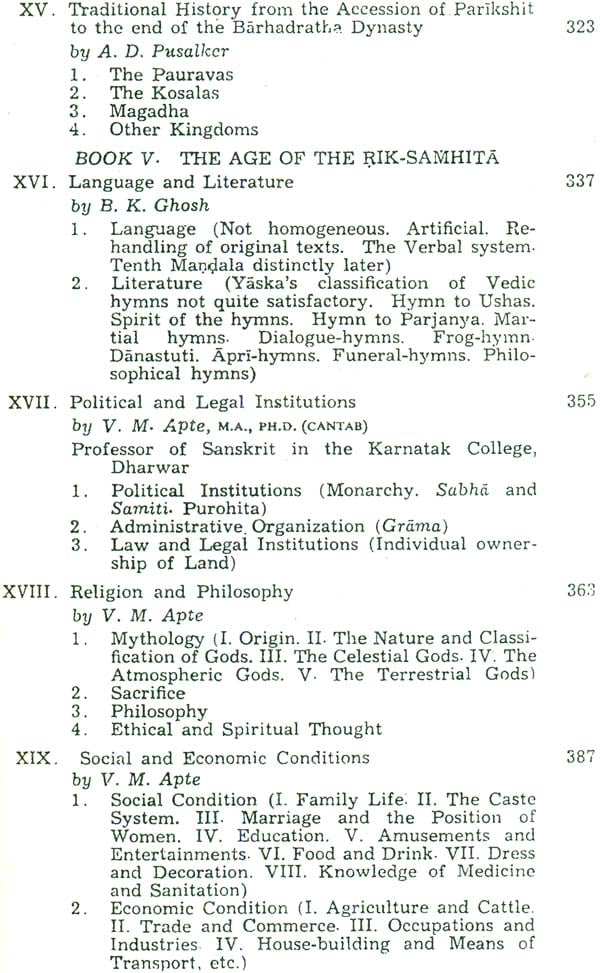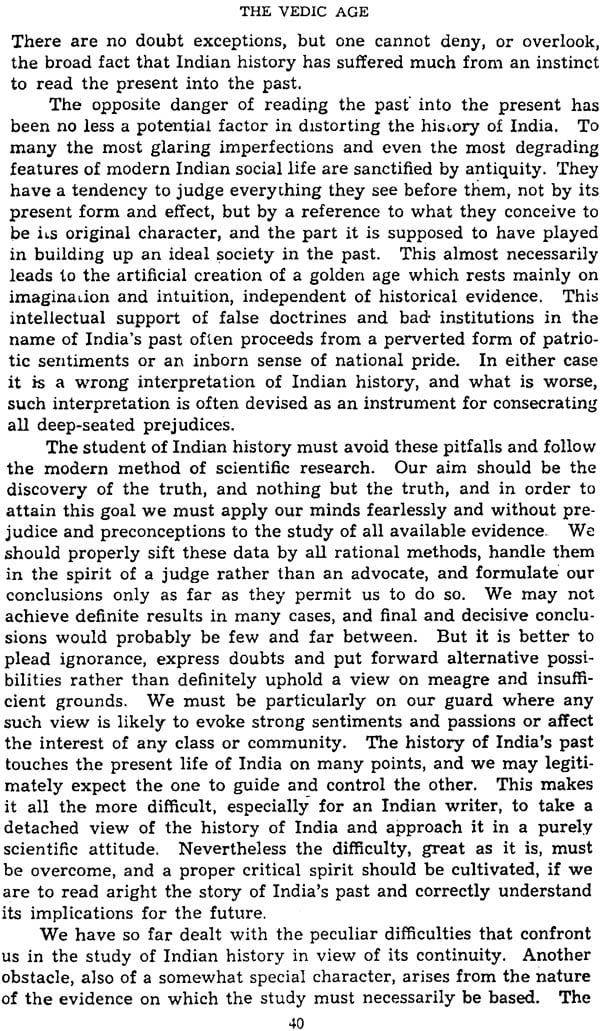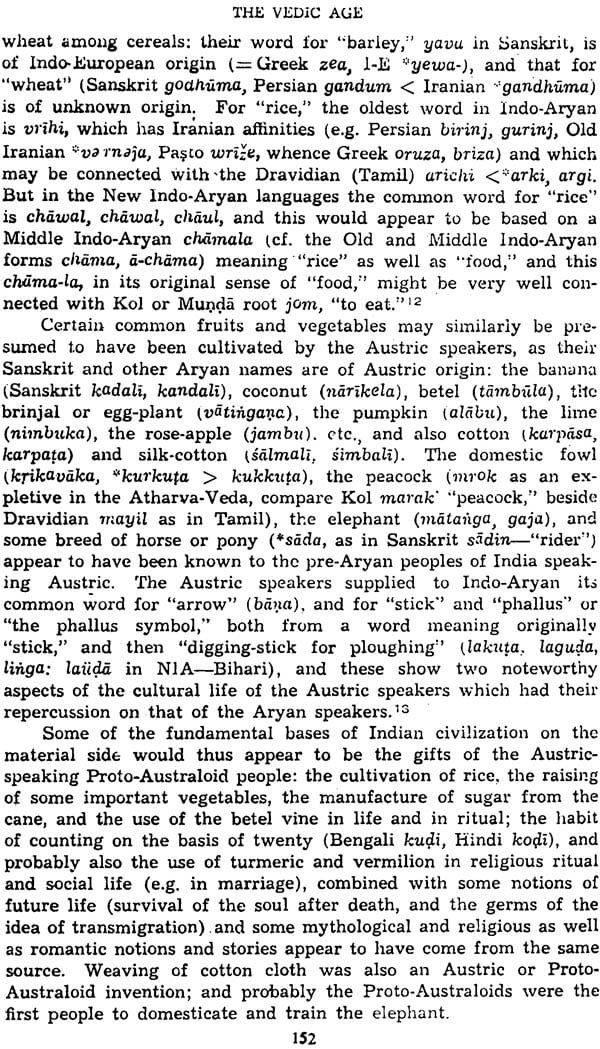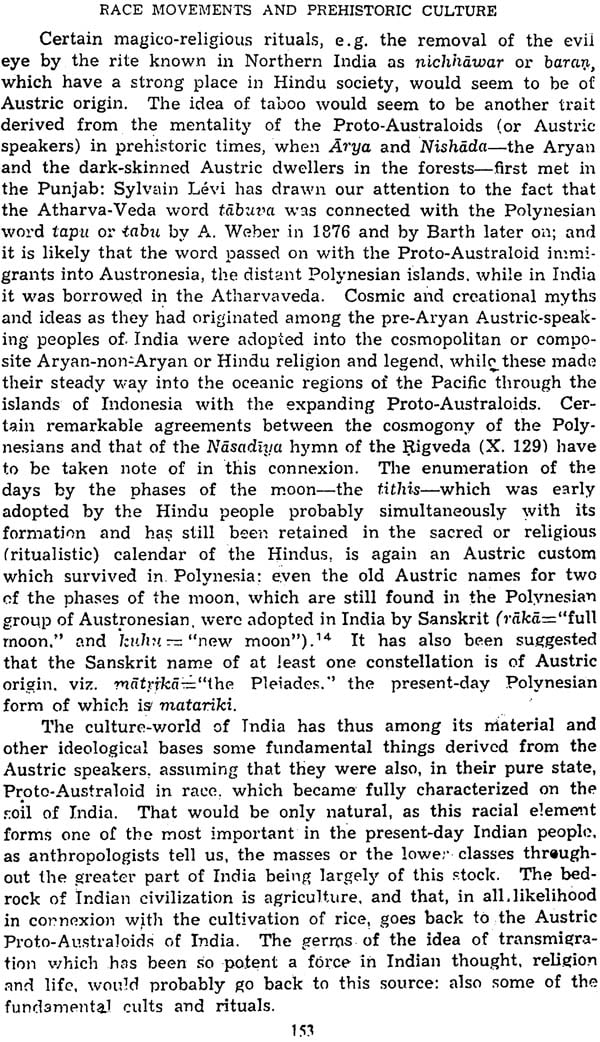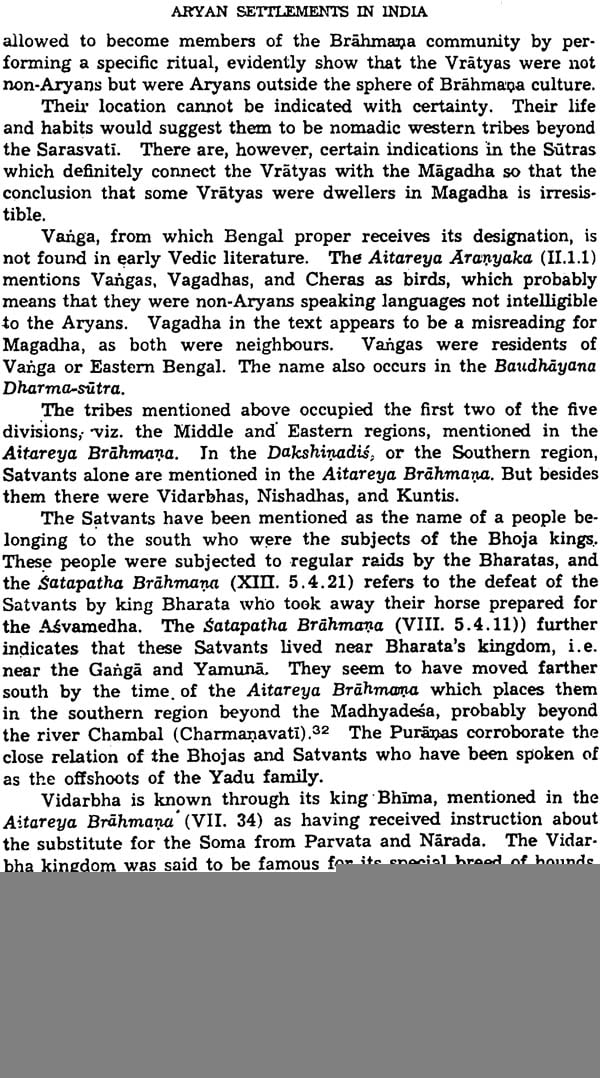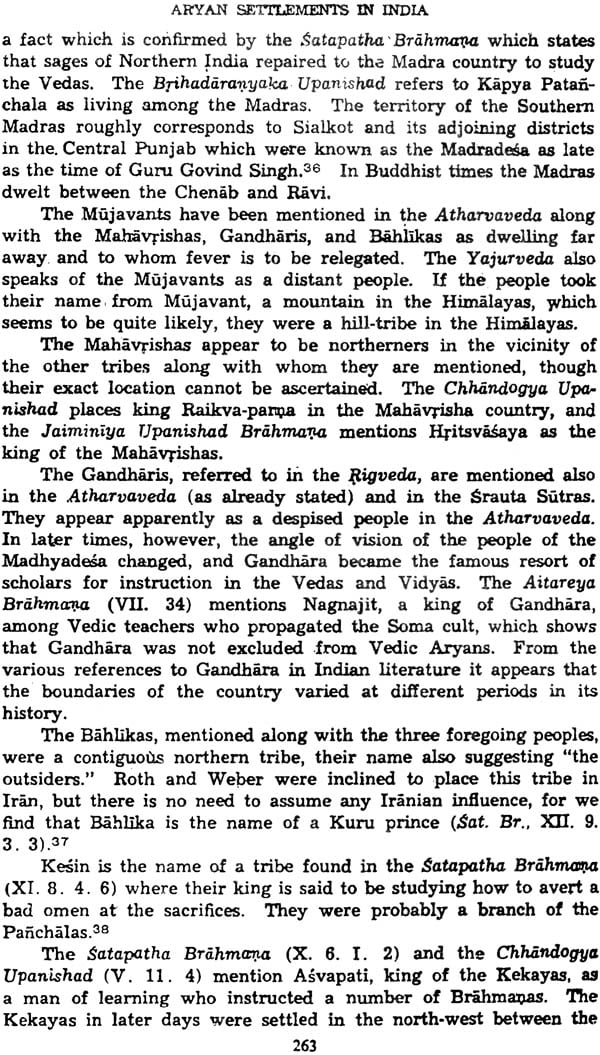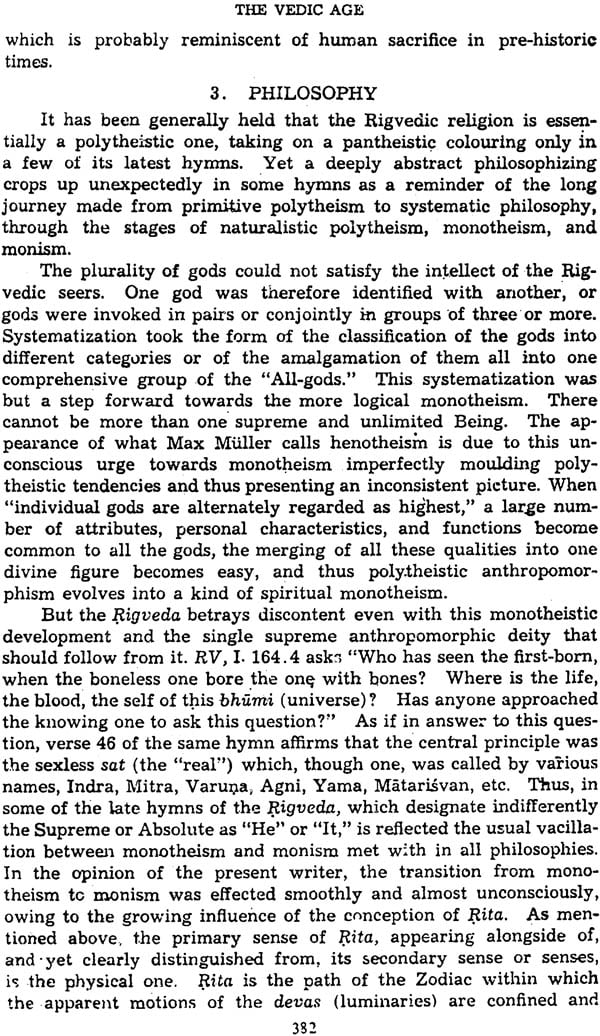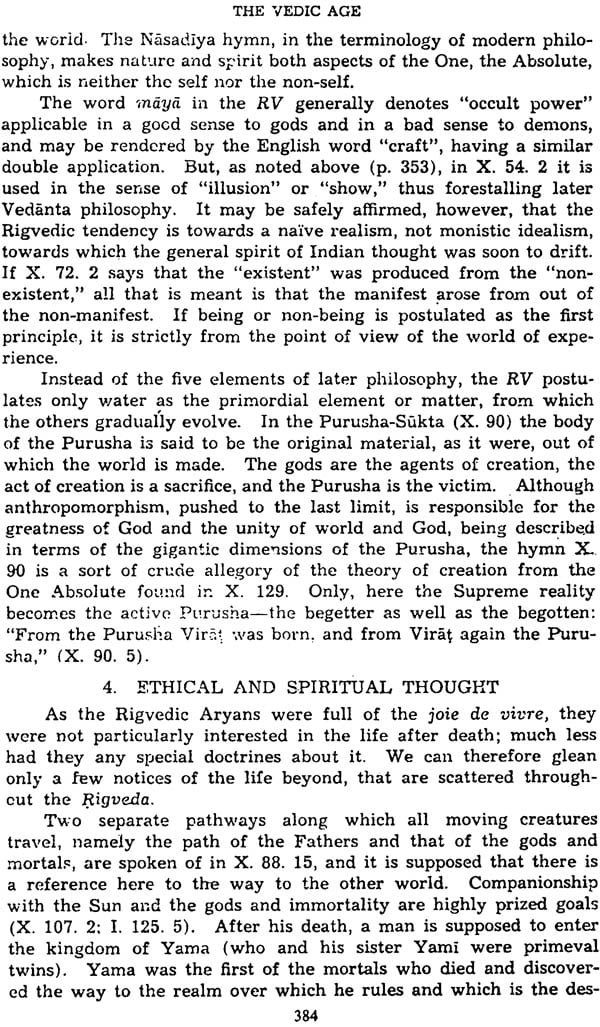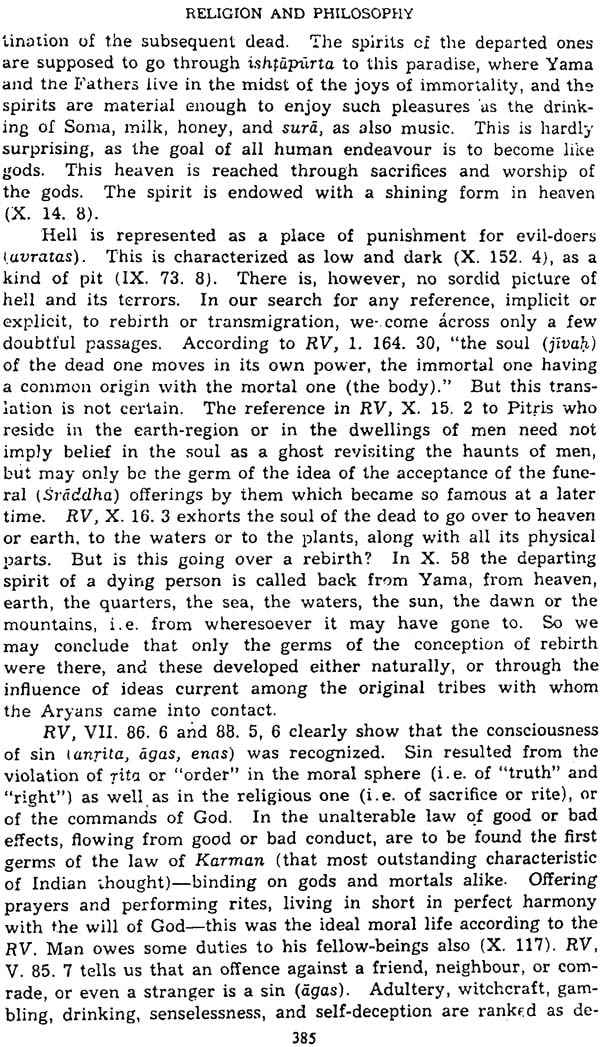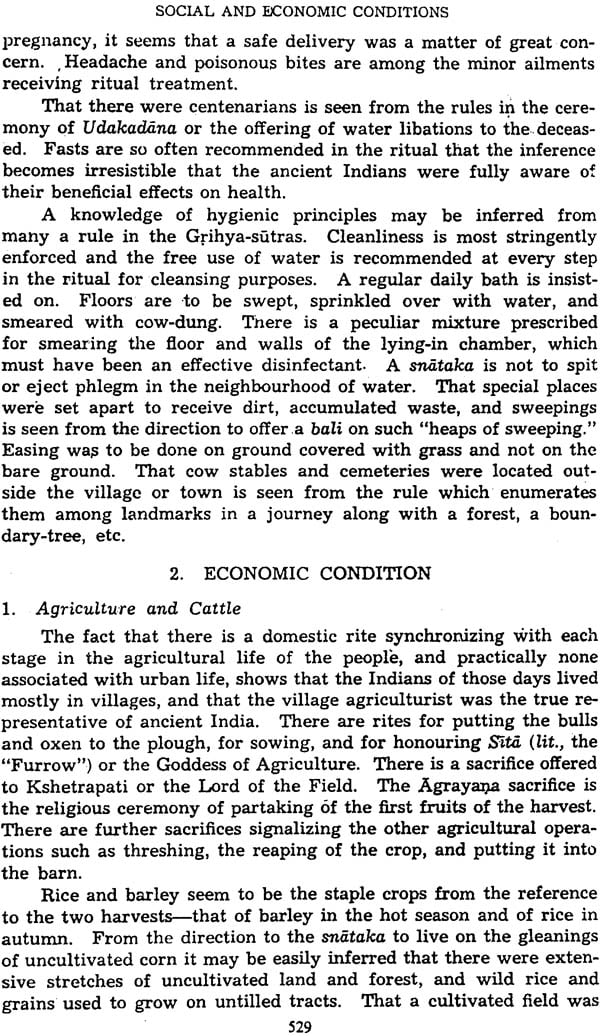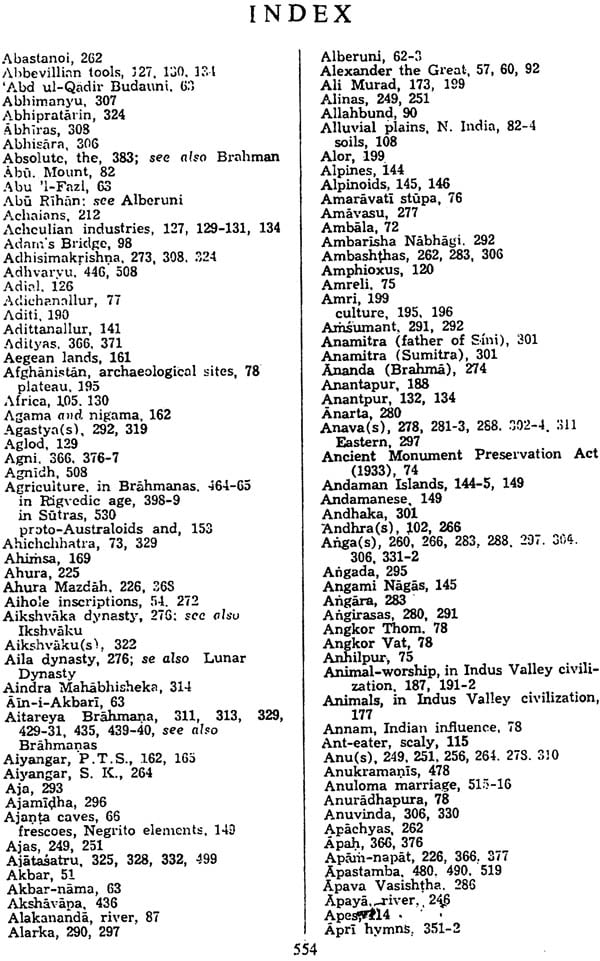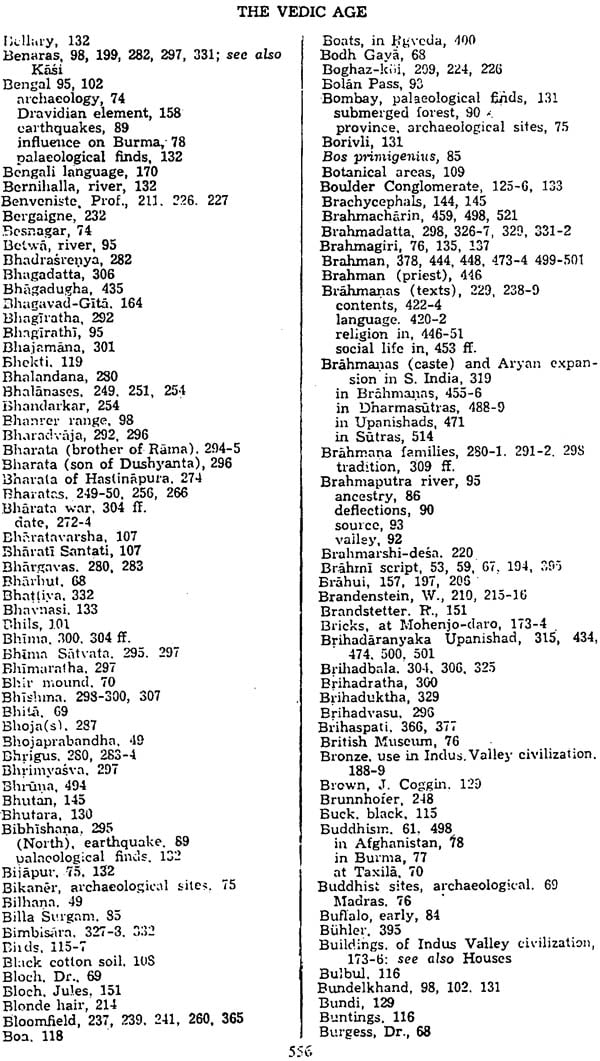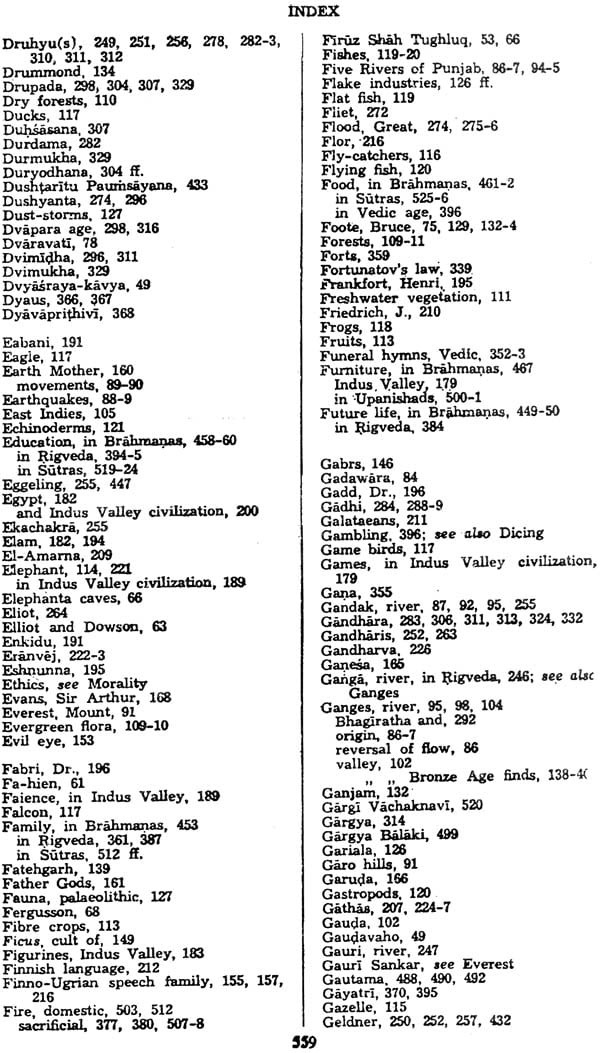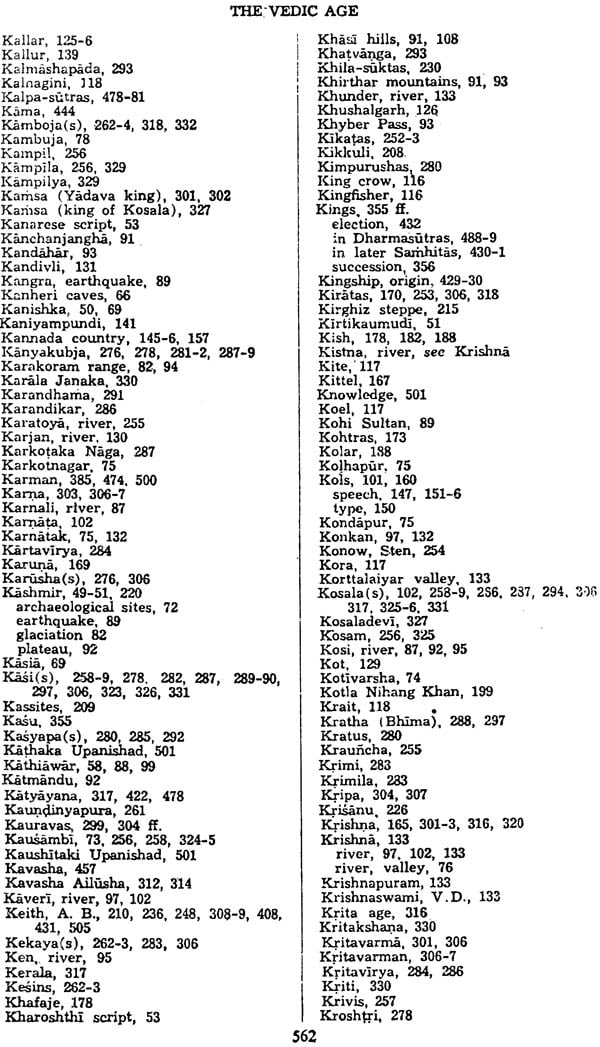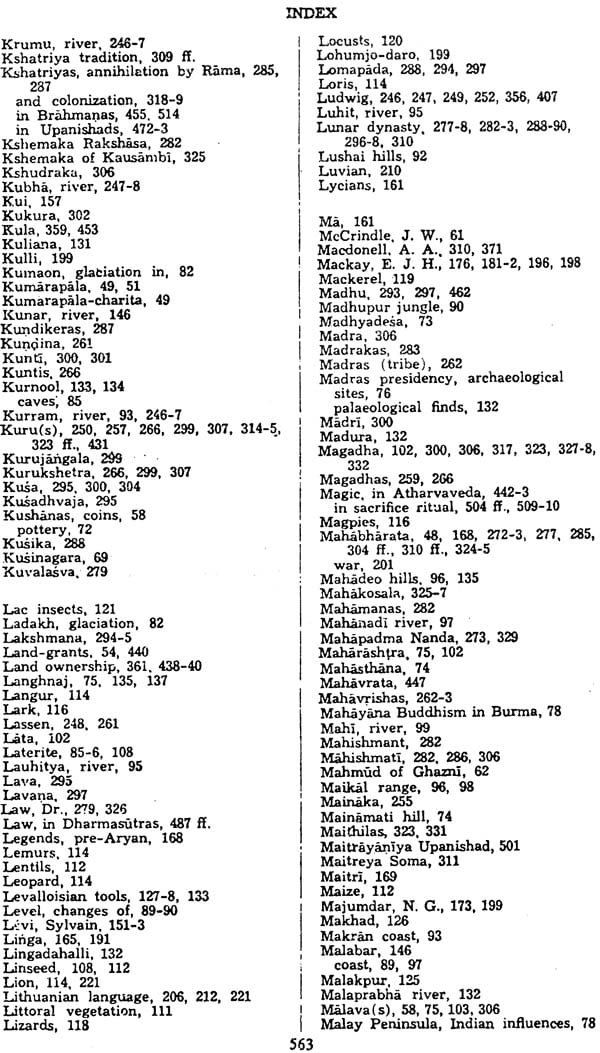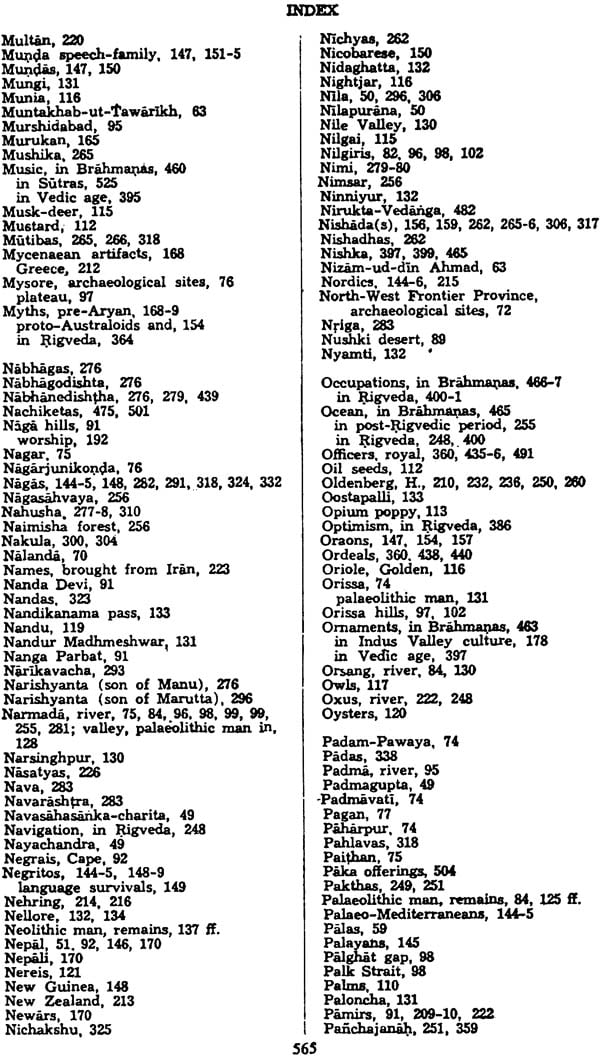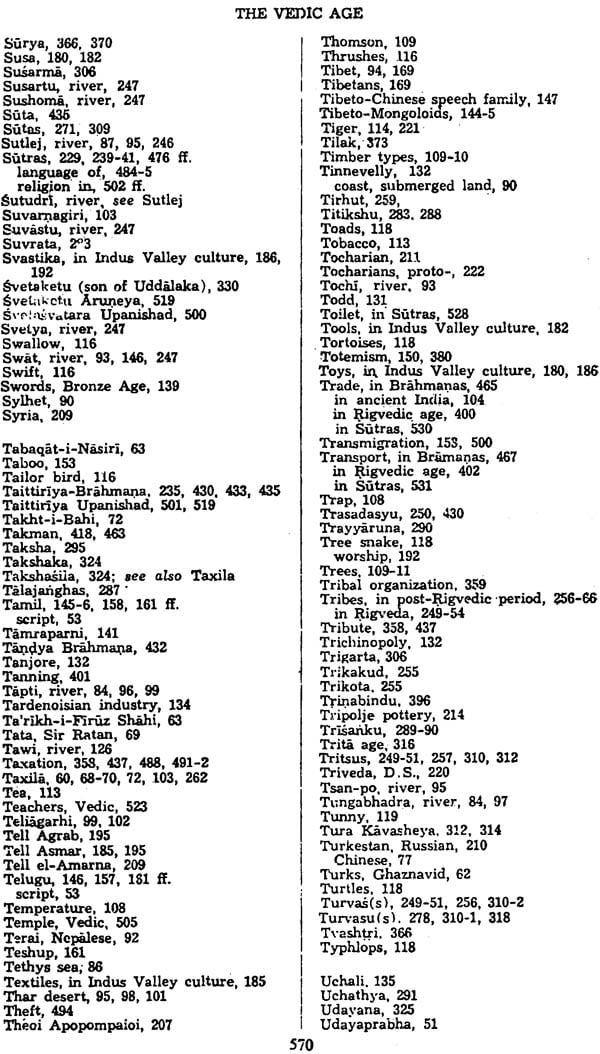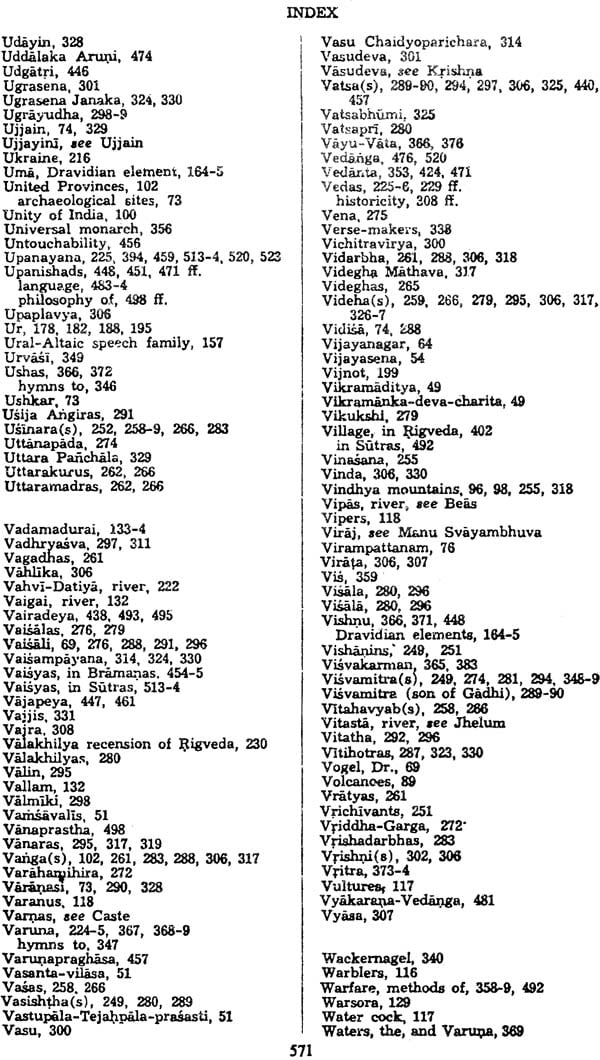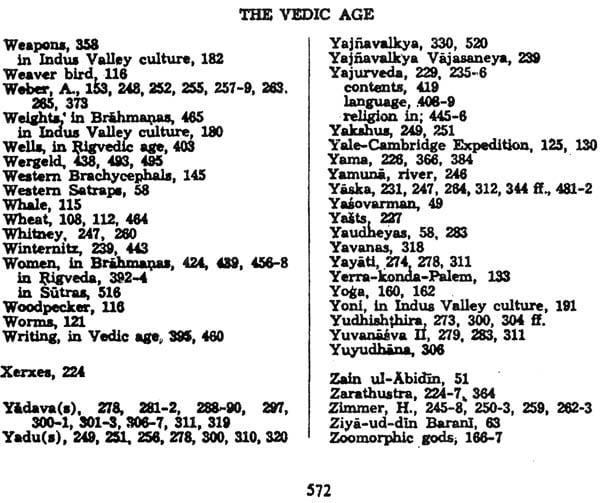
The Vedic Age: The History and Culture of the Indian People (Volume I)
Book Specification
| Item Code: | NAI191 |
| Author: | R.C. Majumdar |
| Publisher: | Bharatiya Vidya Bhavan |
| Language: | English |
| Edition: | 2017 |
| ISBN: | 9788172764401 |
| Pages: | 572 |
| Cover: | Hardcover |
| Other Details | 9.5 inch x 6.5 inch |
| Weight | 980 gm |
Book Description
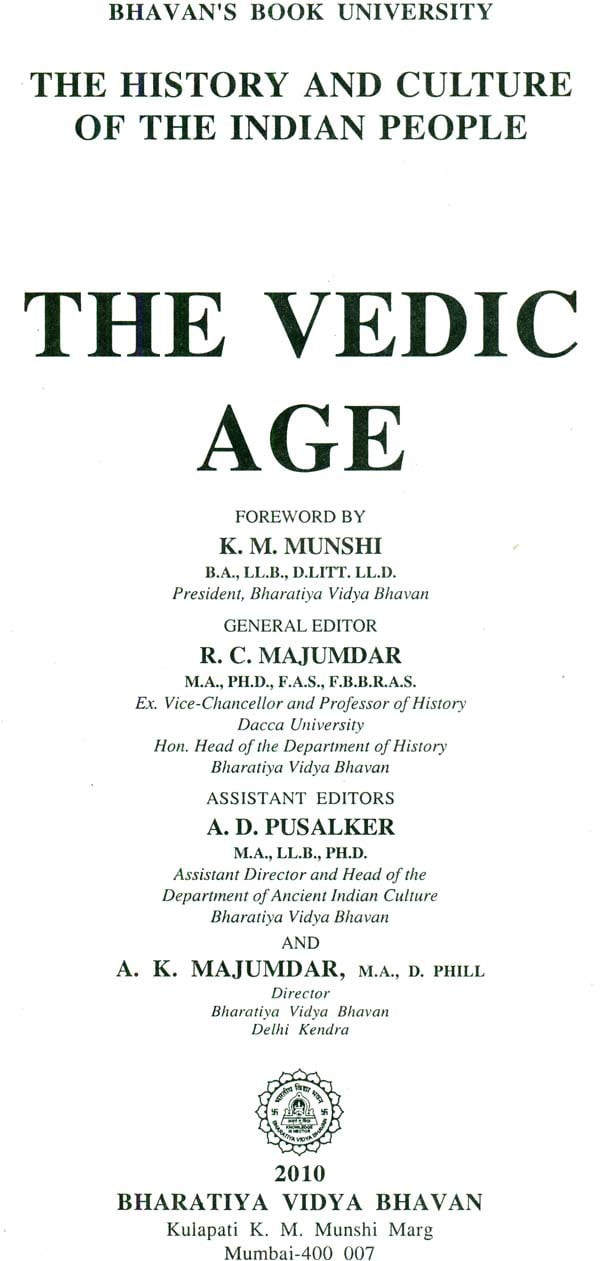
Foreword
In the course of my studies I had long felt the inadequacy of our so, called Indian histories. For many years, therefore, I was planning an elaborate history of India in order' not only that India's past might be described by her sons, but also that the world might catch a glimpse' of her soul as Indians see it. The Bharatiya Vidyi Bhavan, an educational society which 1 founded in 1938, took over the scheme. It was, however, realized only, in 1944, when my generous friend Mr. G. D. Birla, one of India's foremost industrialists, lent me his co-operation and the support of the Shri Krishnarpan Charity Trust of which he is the Chairman. As a result, the Bharatiya Itihasa Samiti, the Academy of Indian History, was formed 'Yuth the specific object of preparing this series, now styled The History and Culture of the Indian People.
'The Samiti was lucky in securing the services of Dr. R. C. Majumdar, formerly Vice-Chancellor of Dacca University' and one of India's leading historians, as full-time editor, and of Dr. A. D. Pusalker, a young and promising scholar, Assistant 'Director of the Bharatiya Vidya Bhavan, as assistant editor. A large number of Indian scholars of repute have lent their co-operation to the scheme. Professor H. G. Rawlinson has been good enough to undertake the task of revising the MS. Messrs. George Alien and Unwin Ltd. rendered my work easy by 'undertaking its first publication in 1951, despite difficult publishing conditions in England, and have now been good enough to remit ,the publication rights to the Bhavan. To all of them I owe a deep debt of gratitude which 1 hasten to acknowledge.
The General Editor in his introduction has given the point of view of' the scientific historian, to which category the contributors belong. My own work for the past thirty-five years has lain in the humbler .sphere of weaving historical romances and literary and cultural studies out of materials so heroically salvaged by Indian and European scholars. : As a result I have seen and felt the form, continuity and 'meaning of India's past: History, as I see it, is being' consciously lived by Indians, Attempts to complete, what has happened in the past form no small part of our modern struggle; there is a conscious as well as an unconscious attempt to carry life to perfection, to join the fragments of existence, and to discover the meaning of the visions which they reveal. It is not enough, therefore, to conserve, record and understand what has happened: it is necessary also to assess the nature and direction of the momentous forces working through the life of India in order to appreciate the fulfilment which they seek.
Some years ago, therefore, I defined the scope of history as follows: "To be a history in the true sense of the word, the work must be the story of the people inhabiting a country. It must' be a record of their life from age to age presented through the life and achievements of men whose exploits become' the beacon lights of tradition; through the characteristic reaction of the people to physical and economic conditions; through political changes and vicissitudes which create the forces and conditions which operate upon life; through characteristic social institutions, beliefs and forms; through literary and artistic achievements; through the movements of thought which from time to time helped or hindered the growth of collective harmony; through .those values which the people have' accepted or reacted to and which created' or shaped their collective will; through efforts of the people to will themselves into an organic unity. The central purpose of a history must, therefore, be to investigate and unfold the values which age after age have inspired the' inhabitants of a country to develop their collective will and to express it through the manifold activities of their' life. Such a history of India is still to be written."
I know the difficulties which beset the path of any enterprise which seeks' to write such a history. In the past Indians laid little store, by history. Our 'available sources of information are inadequate, and in so far as they are foreign, are almost invariably tainted with a bias towards India's conquerors. 'Research is meagre and disconnected.
Itihasa, or legends of the gods, and Purana legends of origin, had different spheres in the ancient literary tradition of India. But later" both came to 'mean the same thing, traditional history. The Kali Yuga, the current Iron Age, was considered too degenerate a period to deserve recording. The past was only cherished as the pattern for the-present and the future. Works by ancient Indian authors which throw light on history are few. Religious and literary sources like the Puranas and 'the Kavyas have not yet fully yielded up their' chronological or historical wealth. Epigraphic records, though valuable, leave many periods unrelated.
Foreign travellers from other countries of Asia, and from Europe, like Megasthenes' of Greece, Hiuen Tsang of China, Almasudi of Arabia, Manucci of Venice, and Bernier from France, have-left valuable glimpses of India, but they are the results of superficial observation,' though their value in reconstructing the past is Immense. Chroniclers in the courts of the Turk, Afghan or the Mughal rulers wrote "histories" which, in spite of the wealth of historical material, are partially legendary and partially laudatory.' The attempts of British scholars,' with the exception of Tod, wherever they have taken these "histories" as reliable source-books, have hindered rather than helped the study of Indian history. Sir H. M. Elliot, the foremost of such scholars, for instance, has translated extracts from Persian and Arabic "histories" with a political objective, viz. to make, to use his own words, "the native subjects of British India more sensible of the immense advantages accruing to them under the mildness and equity of the present rule ..... " So high an authority as Dr. Maulana Nadvi, in his Presidential Address at the "Early Medieval India" Section of the Seventh Session of the Indian History Congress, expressed the verdict of modern scholars, that both the selection and translation of these extracts have not been honest. But unfortunately, Elliot's volumes became the source-book for most of our modern histories of Medieval India, As a result, they do not present a true picture of India's past, nor do they explain how Indians resisted the Turk, Afghan and Mughal incursions, how they reacted to the vicissitudes through which in consequence they passed, and how a Renaissance sprang up out of the impact of Indian with Persian and Turkish cultures.
The treatment of the British period in most of our histories is equally defective. It generally reads like an unofficial report of the British conques and of the benefits derived by India from it. It does not give us the real India; nor does it present a picture of what we saw, felt and suffered, of how we reacted to foreign Influences, or of the values and organizations we created out of the impact with the West.
The history of India, as dealt with in most of the works of this kind, naturally, therefore, lacks historical perspective. Unfortunately for us, during the last two hundred years we had not only to study such histories but unconsciously to mould our whole outlook on life upon them: Few people realize that. the teaching of such histories in our schools and universities has substantially added to the difficulties which India has had to face during the last hundred years, and never more the during recent years.
Generation after generation, during their school or college career, were told about the successive foreign invasions of the country, but little about how we resisted them and less about our victories. They were taught to decrythe Hindu social system; but they were not told how this system came into existence. as a synthesis of political, social, economic and cultural forces; how it developed in the people the tenacity to survive catastrophic changes for millennia; how it protected life and culture in times of difficulty by its conservative strength and in favourable times developed an elasticity which made ordered progress possible; and how its vitality enabled the national culture to adjust its central ideas to new conditions.
Readers were regaled with Alexander's short-lived and unfructuous invasion of India; they were left in ignorance of the magnificent empire and still more enduring culture which the Gangetic Valley' had built up at the time. Lurid details of intrigues in the palaces of the Sultans of Delhi-often a camp of bloodthirsty invaders-are given, but little light is thrown on the exploits of the race of heroes and heroines who for centuries resisted the Central Asiatic barbarians when they flung themselves on this land in successive waves. Gruesome stories of Muslim atrocities are narrated, but the harmony which was evolved in social and economic life between the two communities remains unnoticed. The Mutiny of 1857-the British name for the Great National Revolt-gave the readers a glimpse of how the brave foreigner crushed India; it is only outside the so-called historical studies that the reader found how at the time patriotic men of all communities in most parts of India rallied round the last Mughal Emperor of Delhi, the national symbol, to drive out the hated foreigner.
The multiplicity of our languages and communities is widely advertised, but little emphasis is laid on certain facts which make India what she is Throughout the last two millennia, there was linguistic unity Some sort of a lingua franca was used by a very large part of the country; and Sanskrit, for a thousand years the language of royal courts and at all times the language of culture, was predominant, influencing life, language, and literature in most provinces. For over three thousand years, social and family life had been moulded or influenced by the Dharma-Shastra texts, containing a comprehensive code of personal law, which, though adapted from time to time to suit every age and province, provided a continuous unifying social force. Aryan, or rather Hindu culture (for there was considerable Dravidian influence) drew its inspiration in every successive generation from Sanskrit works on religion, philosophy, ritual, law and science, and particularly the two epics, the Mahabharata and Ramayana, and the Bhagavata, underwent recensions from time to time, and became the one irresistible creative force which has shaped the collective spirit of the people. Age after age the best of Indians, from the mythical Vasishtha to the. modern Gandhiji, found self-fulfilment in living up to an ideal of conduct in accordance with a code of life which may be traced back as far as the Upanishads.
